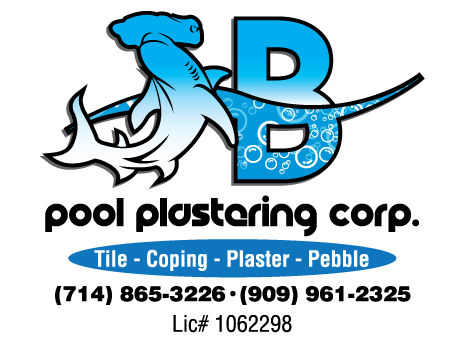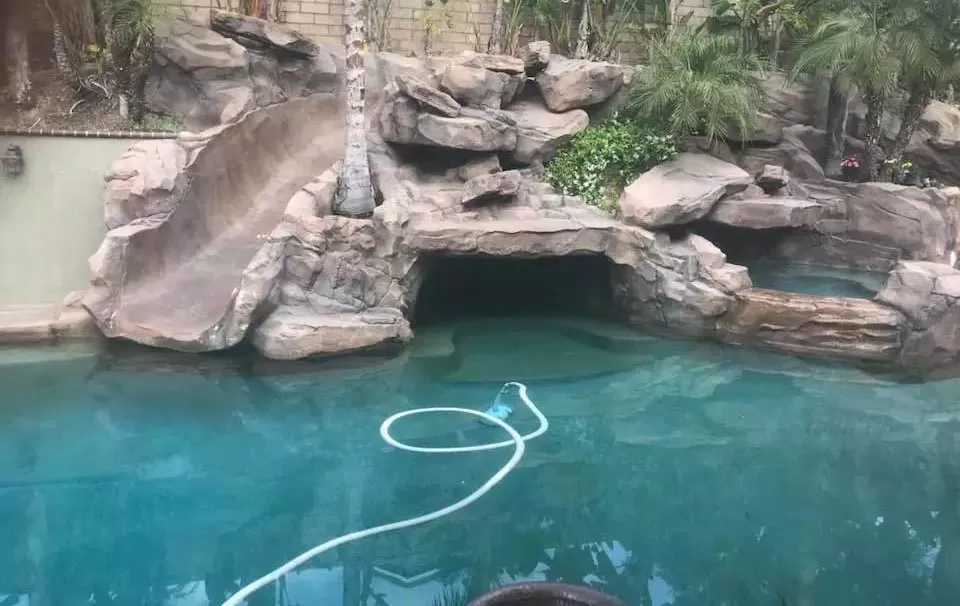
Learn Which Are the Main Parts of a Pool Here
Pools consist of many different parts. As a pool owner, it’s your duty to know each of these elements. That way, you’ll grant your pool the maintenance needed. For this reason, we decided to create this guide to the main parts of a pool.
9 Parts of a Pool All Pool Owners Must Know
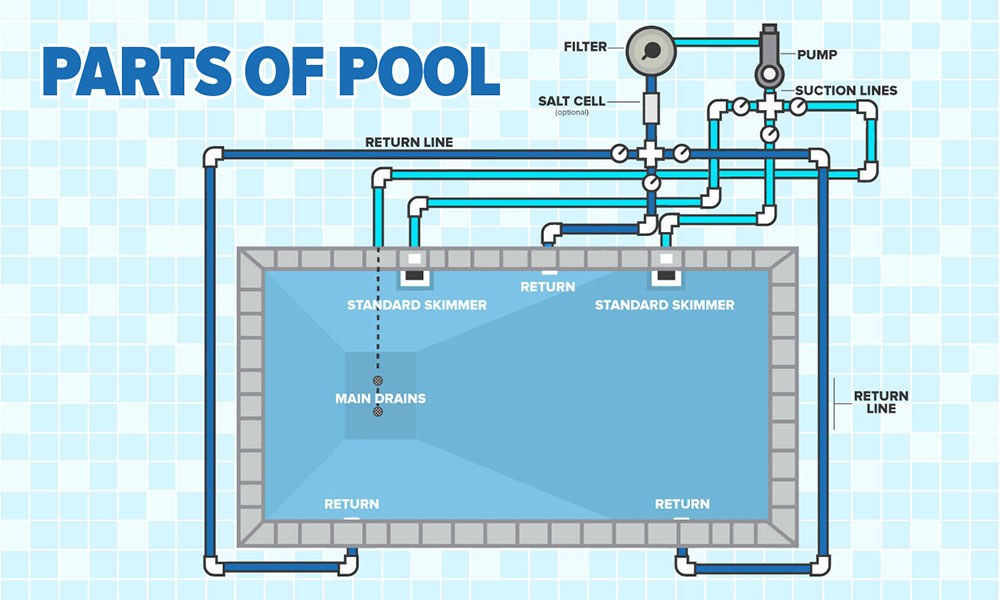
Knowing the anatomy of your pool is within the basics of pool maintenance. Whether you count on a small or a large pool, all pools tend to work in a similar way: by providing circulation to the water.
The circulation process works by providing suction, filtration, and pressure to the pool water. All of these procedures are done by seven different pool components, which we’ll explain further on this blog.
First, there’s the suction system, consisting of the pool’s skimmers, suction lines, and main drain. The suction system introduces the water into the filtration system.
Then, we have the filtration system, which consists of the pool pumps and swimming pool filters.
Finally, we have pressure. A pool’s pressure makes sure that the water is pushed from the filtration system back to the pool. Both the return jets and return lines handle the pool’s pressure.
These are the main parts of a pool you need to know:
- Suction skimmers
- Suction lines
- Main drain
- Swimming pool filters
- Pool pumps as part of the filtration system
- Pool heat pumps or gas heaters (Optional)
- Return lines
- Return jets or inlets
- Chemical feeder (Optional)
Suction Skimmers
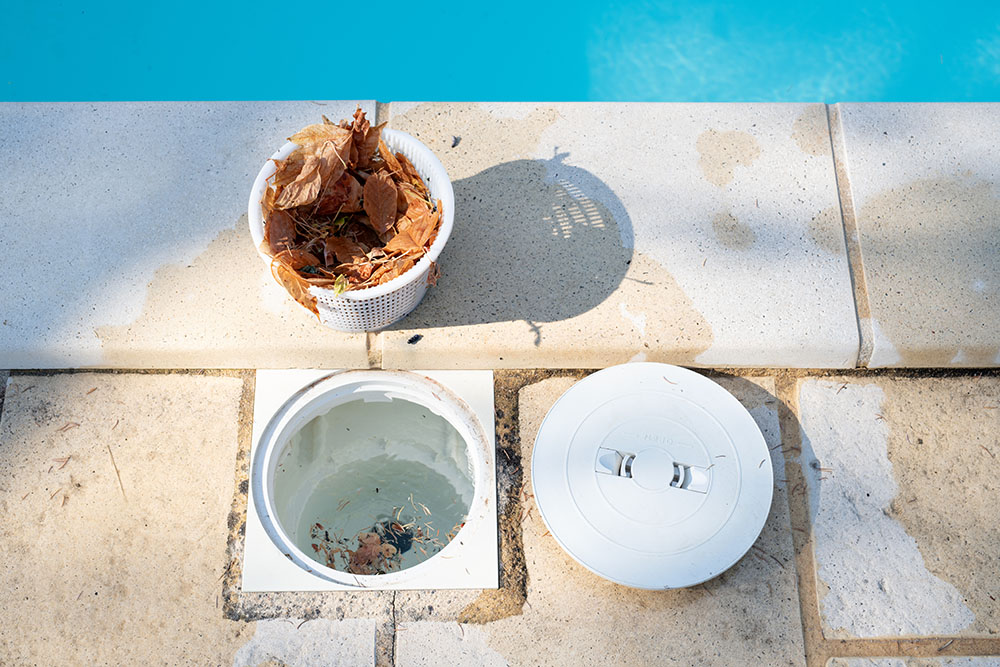
First, we have the pool’s suction skimmers. Pool skimmers are the plastic bucket-like equipment next to your pool. They act as the pool’s circulation starting point by collecting any twigs, bugs, or any other debris. After passing through the skimmers, water is then free of any large debris that might block your filters.
Suction Lines
As we stated before, suction lines are part of the suction system, along with the skimmers and the main drain. For below ground pools, suction pipes are underneath the pool. On the other hand, above grounds count on an overhead system.
These lines are often made out of PVC pipes and are attached to the pool’s pump. Their function is to bring the water to the pump to the skimmer.
Main Drain
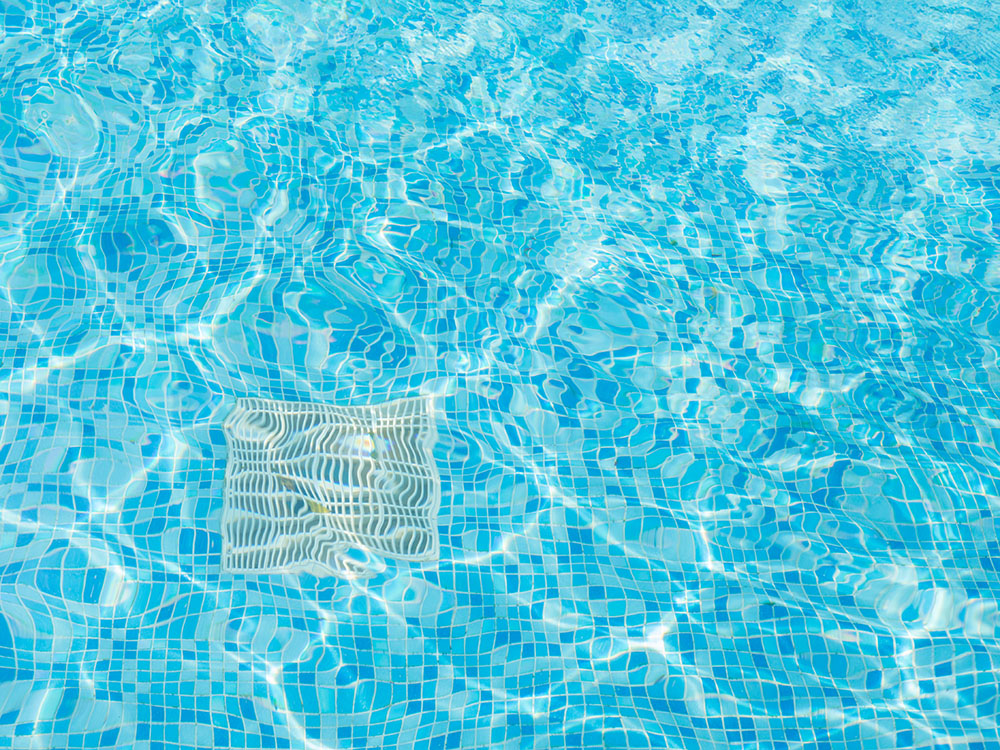
As you may imagine, a main drain is on the deepest spot of your pool’s floor. In some cases, pools may even count on two or more main drains. This is in order to help prevent any accidents leading from suction force coming from having only one drain.
A pool’s main drain has the same function as the skimmers. Though, they drain the water that’s of the bottom of the pool. Skimmers, on the other hand, provide suction to the water that’s on top of the pool.
Swimming Pool Filters
After the suction process of a pool’s circulation, there’s the system. First, we have the filters. Just as the name implies, these help filter the water. By doing so, they effectively eliminate any bacteria or particles that made it past the skimmers and sanitizing agents.
There are three main types of pool filters: sand, cartridge, and diatomeceaous. Sand filters, or sand cells, use a specially graded sand to filter water. This sand can catch ultra smal debris. However, the down side of sand filters is that you need to replace it every four years.
Next, we have cartridge filter. These filters work by using a paper-like net to catch any debris. Sadly, cartridge filters tend to be really unreliable.
Lastly, there are diatomaceous filters. They use a special type of diatomaceous earth filter covered with plastic grids and fabric collect any type of debris. Diatomaceous filters are the best option out there, but, they are much more expensive than your regular options.
Pool Pumps as Part of the Filtration System
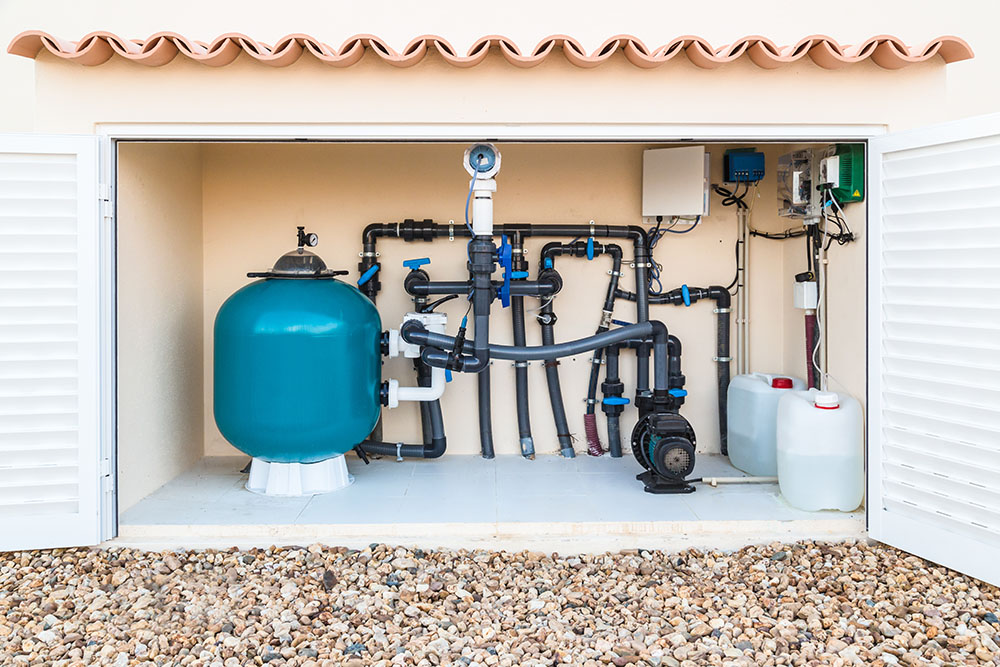
Additionally, a pool’s filtration parts of a pool include the pumps as well. They help pull the water by creating a vacuum with the impeller. The impeller creates this vacuum by spinning very fast. Ultimately, a pump pushes the water gathered from the skimmers to the filter.
Pool pumps have a horsepower span of ¾ to 3. Of course, smaller pools require much less horsepower compared to larger ones.
Pool Heat Pumps or Gas Heaters (Optional)
Both pool heat pumps and gas heaters are optional pool equipment. Both options serve the same function: heating your swimming pool. However, there are slight differences between both pieces of equipment.
If you’re looking for an attached heater for your pool that can heat over 100 degrees Fahrenheit, then your best option is to go for a gas heater. On the other hand, pool pumps are much more affordable, ecofriendly, and work best for closed pools.
Return Lines
After going through the pool’s filters, water goes through the return lines. Along with suction lines, return lines also are from PVC material. If you have a pool with a waterfall or other water features, then your return lines provide it with the water they need.
Return Jets or Inlets
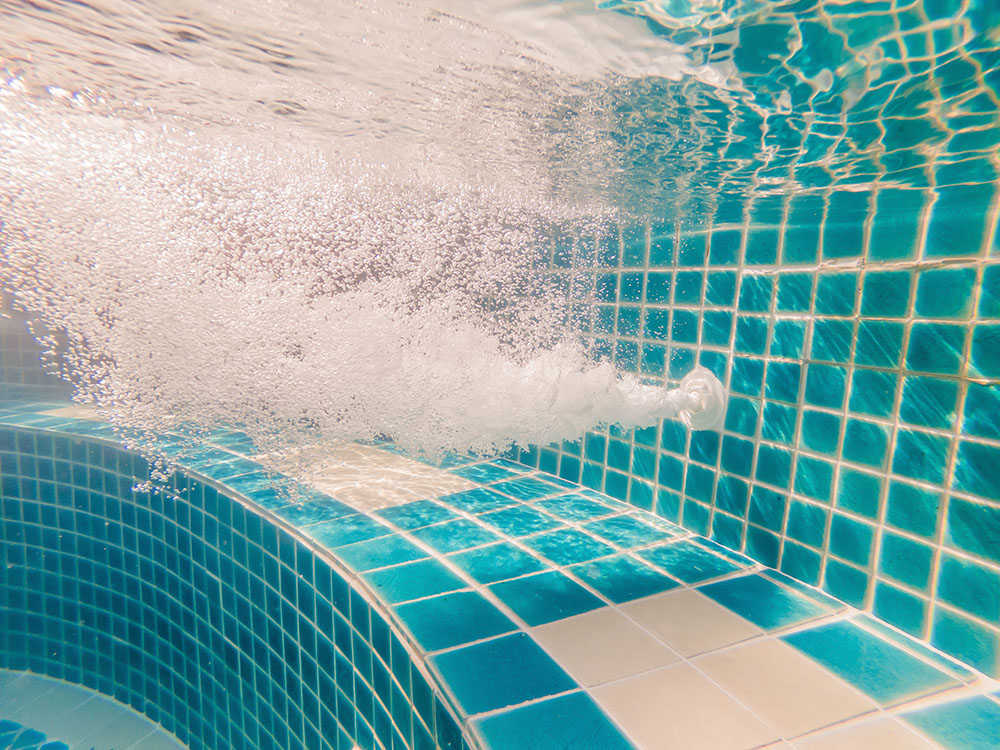
Lastly, we have return jets or inlets. Attached to the end of the return lines, return jets bring back the water to the pool. In some cases, you can modify their direction where they push the water.
Return jets are among the most essential parts of a pool. Not only do they bring water back to the pool, but they also provide the circulation the pool needs. In other words, return inlets keep the water moving at all times.
That’s why it’s always a good rule of thumb to keep some return jets facing downward in the same direction. That way, they provide a circular motion to the water. This motion helps prevent the debris from clogging up at the bottom of your pool. Additionally, you prevent cloudy water and black algae as well.
Chemical Feeder (Optional)
Along with pool heaters, chemical feeders are an optional piece of equipment. They make the sanitization process of your pool as smooth as possible. All you need to do is fill with sanitizing agents, such as chlorine and bromine, from time to time. With a chemical feeder, you sanitize your pool automatically without any troubles!
Now that you know that you know the main parts of a pool, you can provide it the maintenance it needs! Stay tuned with our blog for new updates and tips!
